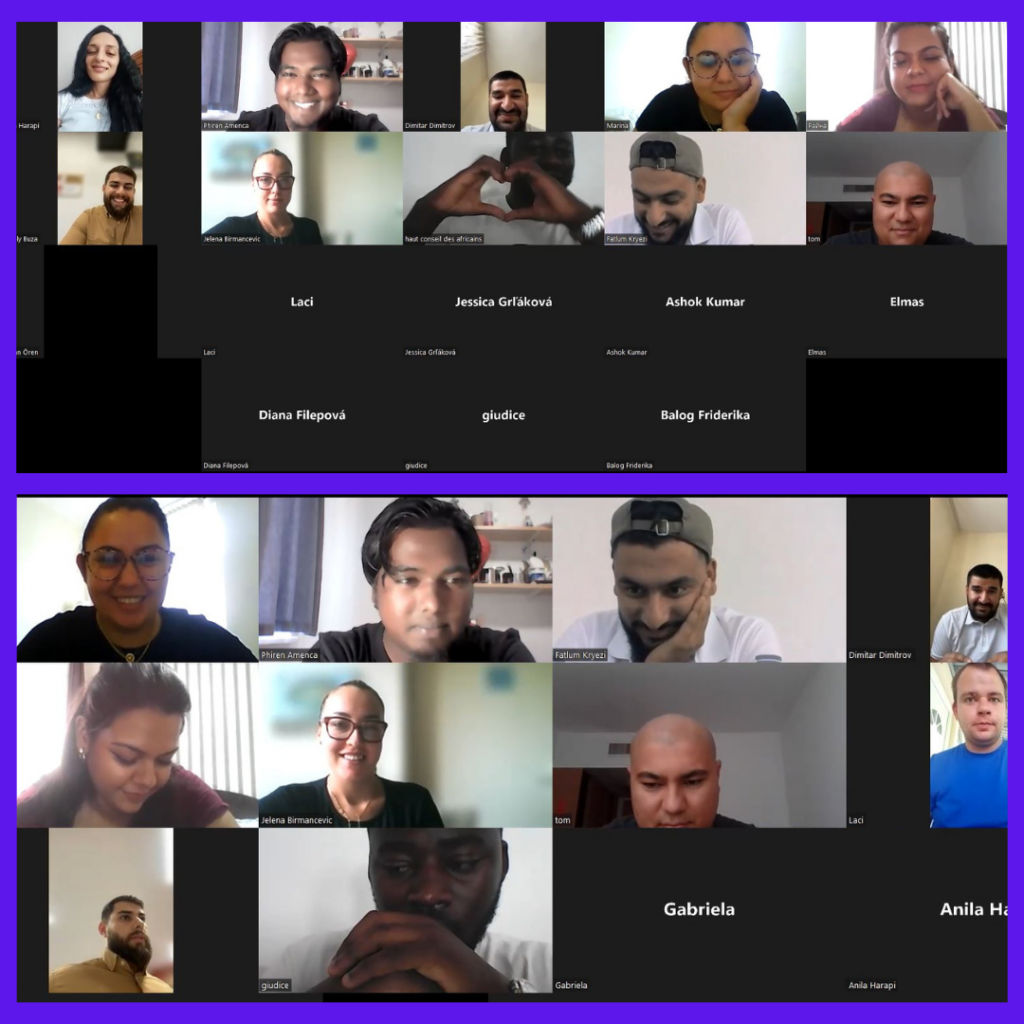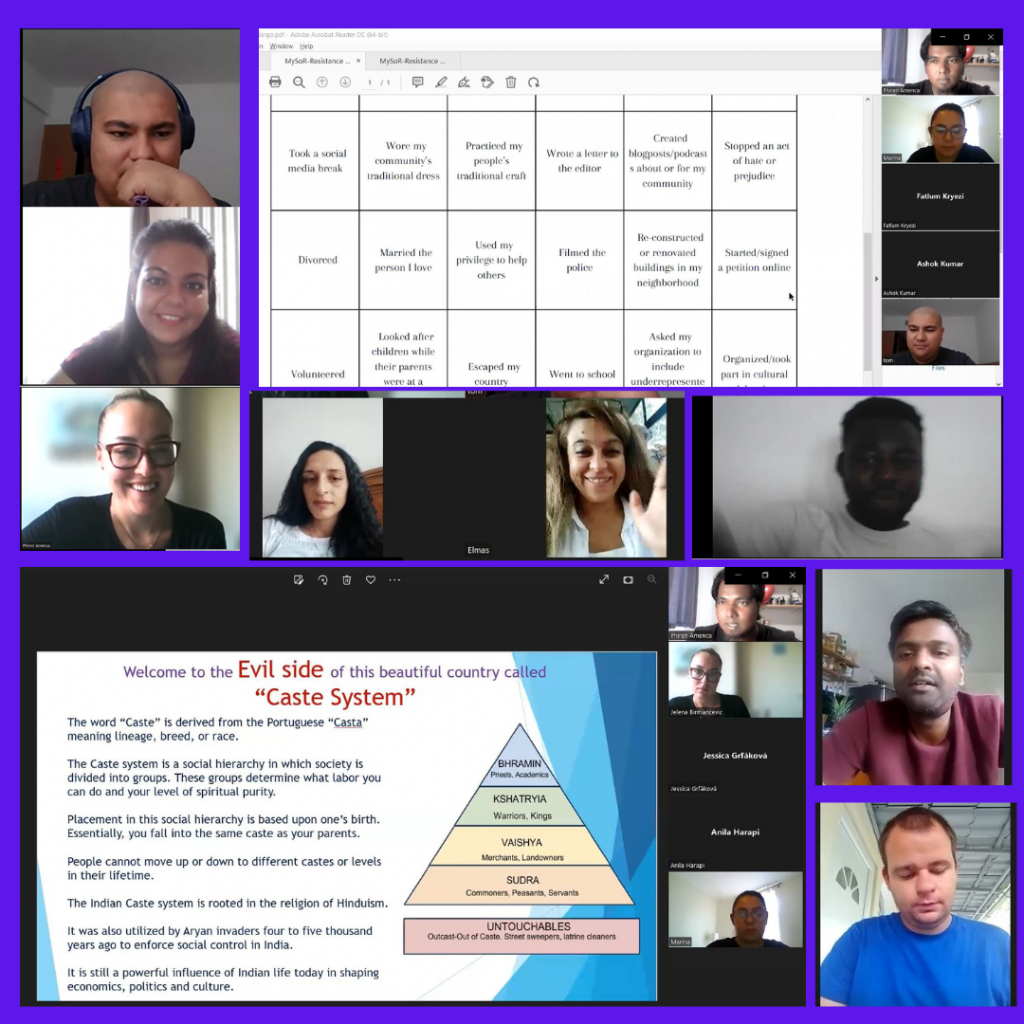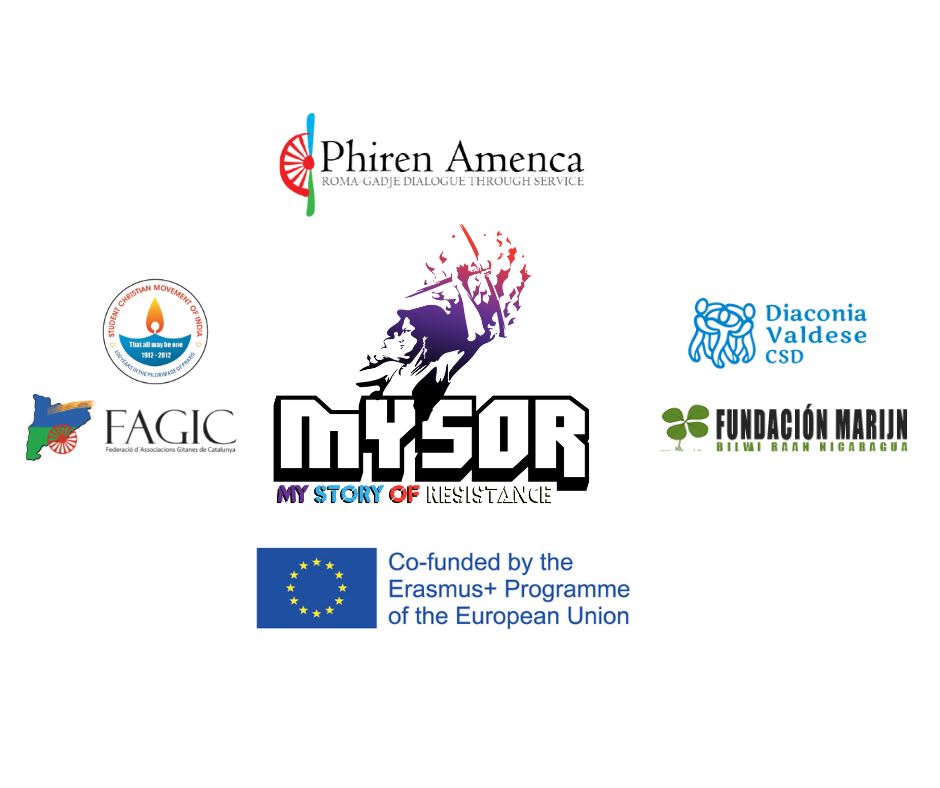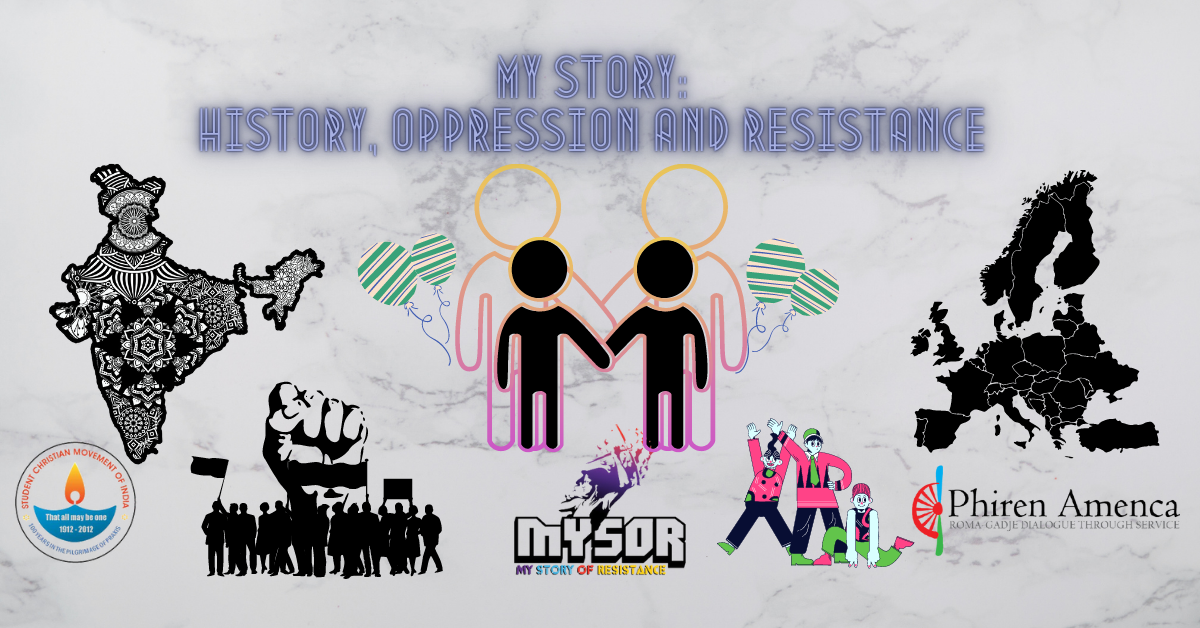Article written by Binu Bill Bright
“Most of us have two lives. The life we live, and the unlived life within us. Between the two stands Resistance.” ― Steven Pressfield.
There are two close friends named Dalits/Adivasis & Roma, I call them friends because they closely share experiences. Even though they come from different parts of the world, there are numerous similarities between the situation of Dalits/Adivasis in India and Roma in Europe. The historical and ongoing intolerance that these two groups have experienced are visibly similar. They were once, and they still very much are, considered to be “untouchables, unbearable, and unseeable”. Despite being well-known throughout the world, these two communities continue to remain powerless and voiceless serving as a simple example of unescapable prejudice and discrimination.
What issues do these communities face?
To keep it short, Dalits face caste-based discrimination enforced by those in power to keep the communities economically and socially oppressed which is connected with social, political, or religious realities. Roma face race-based discrimination by others and are excluded and denied access to all essential services such as education, political representation, decision making, active democracy, and equal opportunities. Both communities face racist attacks from all corners of society, including the media, the political elites, and the general population.
We all are aware that there would continue to be challenges with minority groups, but to understand them at an individual and group level, I organized an online meeting with Roma, non-Roma and Dalit young people from various counties like Albania, Belgium, Bulgaria, Hungary, Kosovo, Slovakia, Serbia, Sweden, and Turkey on the 24th of August 202. Its aim was to understand the different forms of discrimination and the challenges faced by the Roma living in Europe.

I opened the floor with a question asking, “what do you think resistance means?” and the answers were… speaking up, the power of opposing, thinking with your own mind, not conforming, having an active approach towards speaking up for the problems in society, and to fight against something that is attacking you, even our very own existence is resistance.
Having a basic idea of what resistance means, I shared my personal story of how I was discriminated based on my skin color from a very young age until the present, and about my love life during the college days with an upper caste girl where we separated because of the caste issue after several warnings from her family side, which put me low, helpless, rejected, and unmotivated. As time passed by, I was introduced to the Student Christian Movement of India and became a student member and representative of this organization. Several programs that were organized by this movement changed my attitude and lifestyle because it was something unique that I came across. It added hope again in my life and with some courage I challenged myself, stood up and participated in the college elections. While campaigning and passing by the classrooms, I heard from my fellow candidate who was from an upper caste in a room saying “Why do you want to vote for a black guy, he is not one among us”. Hearing this, I lost interest in everything that I did, but life continued…
I again partook in a lot of seminars, conferences, rallies, protests, summer camps and workshops, and these helped me to realize all my past and the way I was treated, and the kinds of discrimination I faced my entire life in different forms. In-return for the tremendous support, I thought of working for this organization and it expanded my process, and I started working for the minority student community and welfare of the society. This was the turning point in my life as I found a purpose in helping the most powerless to realize their rights anywhere that is denied. Even though I don’t speak much I was able to be the voice for the voiceless through various sets of programmes which I organized concerning Human rights, gender issues, eco- social justice, issues concerning Dalit/Adivasi & Tribal students’ issues, and inter-faith relations.
After sharing my story, another question was asked: “what different areas of life we can practice resistance?”. In connection with this question, we played an activity called resistance bingo, which helped all of us to familiarize with different forms of contemporary resistance and think about our own resistance practices. Then I created three breakout rooms and asked participants to share their visible forms of struggles of being Roma and the kinds of steps taken by them to resist. Some of their answers are listed below:

“Many Hungarians live in Slovakia, people here face a lot of discrimination based on the language they speak as they closely share Hungarian borders, and they speak Hungarian instead of Slovak. So this has been an issue where they look down on these people and create hate. But they never stopped speaking Hungarian as it is their native/communities’ language”.
“Many Roma live in Bulgaria and their living conditions are very bad. The municipality could help them, but it never happens as they don’t want to support Roma. But today there are lot of young Roma who are successful, and help other members of the community, so we see some changes happening now in the how equality law is enforced to protect the rights of people, especially the minorities.”
“During school days, usually when non-Roma get to know you’re a Roma, they start bullying you, shouting or screaming at you for no reason. But I somehow passed it I still went to school because I don’t care.”
“Being a Roma woman, it is important for me to speak up in certain situations: as you know being women we are discriminated and oppressed. It was a process for me to even ask questions or to stand up against something which I don’t agree with within a group, as I was thought to behave well and nice and not to talk back. It was a process to learn and teach myself to break down all these kinds of stereotypes or behavior. Even when I am in a conference or in a debate when people pass some sexist or racist comments, I push myself to talk back because I use this platform to represent women who don’t have proper access to education or the chance to participate in such conferences. It pushes me to voice back and raise concerns which many don’t even consider to be issues.”
It was mesmerizing to hear from a non-Roma sharing the following: “I was born in a small town, I am not a Roma but I was dating a Roma guy. Until that moment I didn’t realize what level of discrimination was against Roma people from my community. While dating I never knew it will be a problem, but one fine day a person wrote a letter to my father saying, “your daughter is with this guy who belongs to Roma”. My father was acted okay but I could sense he was not comfortable with it, he was holding back to say something mean. But my mother was openly against it. When I started being in a public relationship, some of my friends started being mean to me by saying “did you know he is a Gypsy?”. Even though he is a good person, just because of his identity people started judging.
Others spoke about how they involved themselves in social actions, such as organizing an action or demonstration, by volunteering, and contributed to the local communities by taking actions based on their issues and supported each other in times of trouble by sharing contacts and building up networks across the countries.
Have you ever thought about why it is that such a large group of minority people is frequently disregarded, neglected, and subjected to discrimination?
It was so overwhelming to hear different stories from the participants. It opened broader understanding I could not hear from the other part of the world earlier because we are consumed by the things around us.
However, the Roma community is Europe’s largest and most persecuted minority. During World War II, Roma were mass exterminated and killed by the Nazi-occupied Europe. It was in May 1995, after a 45-year civil rights movement to gain some rights, that Germany legally recognized the Roma community as national minority. It took the European Parliament another two decades to acknowledge the genocide against them and declare August 2as International Roma Genocide Remembrance Day.
Young Roma suffer discrimination on a daily basis and have restricted access to political participation and decision-making processes. There are several organizations and movements that work with the Roma community across Europe. As per my experience working closely with Phiren Amenca, there are wonderful and different ways that the organization practices resistance through international events for young Roma and non-Roma.
Besides volunteering and non-formal education, advocacy has become a central, and visible, element in all the activities done by the organisation, some of which I had the chance to take part in, such as the one in Slovakia titled “Tackling Hate Speech Online and Offline”. This event created a space to understand the challenges, needs, and opportunities that the Roma encounter in their day to day lives online and provided them with tools to stand up for their communities.
Another large-scale event called, “So keres, Europa?! –Roma Youth Social Forum” brought together 150 young Roma and non-Roma from all around Europe to the European Youth Capital for 2022, Tirana, Albania. “So keres, Europa?! is a movement that creates space and visibility for the Roma youth and their issues. Young people worked together on creating political anti-discrimination messages in the form of memes; created portraits of Roma heros form history or their own lives; practiced dance choreographies of different Roma communities, and presented them at a final festival.
Two study tours to the concentration camps took place in Auschwitz, Poland, and Buchenwald, Germany. These tours aided in bringing together young Roma people from across Europe to remember the numerous victims of the Nazi genocide and to educate them about its historical significance. They honored the victims’ acts of resistance and concentrated on current efforts to battle prejudice and antigypsyism.
In recent days I took part in international training for young Roma and non-Roma on combating antigypsyism: Addressing intersectional discrimination among Roma youth: Roma LGBT+ and gender equality. As we are already aware that in general Roma suffer so much and this is even more so in the case of Roma women and LGBTQ+ people who experience intersectional discrimination, whose specific issues and needs are missing from policies. This training created an impact to fight conservative and patriarchal views outside and within Roma communities, focusing on issues of Roma women and Roma LGBTIQ people to better understand the differences and similarities, and enabled us to raise awareness about human rights, equality, and justice.
Likewise in India, the Dalits also practice various acts of resistance with the help of the local NGOs, organizations, movements, human rights activists, etc. I would like to list a few major acts that I learned or encountered during my work with the Student Christian Movement of India.
Firstly, parents in India being against inter-caste love is a very common phenomenon because it has its roots in the caste system. A very small percentage of lower-caste people is married to the upper caste, as they have rules set up in their communities to marry someone within their caste. In many cases, the consequence of disobeying these rules is that they beat them to death, and they call it honor killing which is dishonor killing in my view.
Issues do not only arise in terms of marriages: if someone belongs to the LGBTQIA community, it is a different story altogether… But after several years of fighting and protests, in 2018 we, activists managed to take down “section 377” which deemed “homosexuality” a punishable crime.
Due to the increase in child and women rapes in India, we have been promoting the international campaign called “Thursdays in Black- the world without rape and violence against women”: Every Thursday we wear black to show solidarity, and fight for the cause.
The conflict between Israel and Palestine is another social issue we take a stand about: “This is my last HP” is a campaign spreading awareness to people to stop buying HP (Hewlett Packard) products because HP is supporting Israel in supplying technology and accessories.
During the election period, Dalit and Adivasi/Tribal students came together from different colleges and created a student manifesto listing out the student’s problems and creating awareness of their needs within the political circles.
Access to drinking water and other natural resources is limited to Dalits/Adivasis & Tribals. Talking about water issues, a story of a legend also strikes my mind: Can a simple act of drinking water be revolutionary? Dr. BR Ambedkar, In 1927, led 4000 Dalits to drink water from the tanks that were only used by the upper caste people in Maharashtra, as Dalits were barred from all access to public utilities. Even till today every year 1000’s of people go to that tank in groups and drink water from there as a mark of remembrance and resistance. This is a movement for untouchables that was launched by Ambedkar 95 years ago. The water issue is still unsolved today: In Rajasthan, India in August 2022 a news article says, “A 9-year-old Dalit boy was beaten by his teacher to death for drinking water from the upper caste pot”. This is the ‘present’ India.
No matter how long it takes, Dalits/Adivasis & Tribals are always persecuted in various forms in India like the Roma in Europe.
I volunteered here with Phiren Amenca and got to know your issues better, I feel your issues are mine and my issues are yours because, as I stated in the beginning, we are “close friends” from different corners of this world. Of course yes, we are different, aren’t we? Our hair is different, our skin color is different, our languages are different, our values are different, our cultures and traditions are different, and its okay to talk about that and acknowledge our differences. If we just talk about the fact that we are different and acknowledge why that is, we might finally be on the same page and be “less” different! We can be the change and fight our evil society together, as our problems are not different.
Jai Bhim, Opre Roma!

The My Story of Resistance – From exclusion to active participation is an KA2 Capacity building for Youth project funded by the Erasmus+ Programme of the European Union. Views and opinions expressed are however those of the author(s) only and do not necessarily reflect those of the European Union or the Erasmus+ Programme. Neither the European Union nor the granting authority can be held responsible for them.


